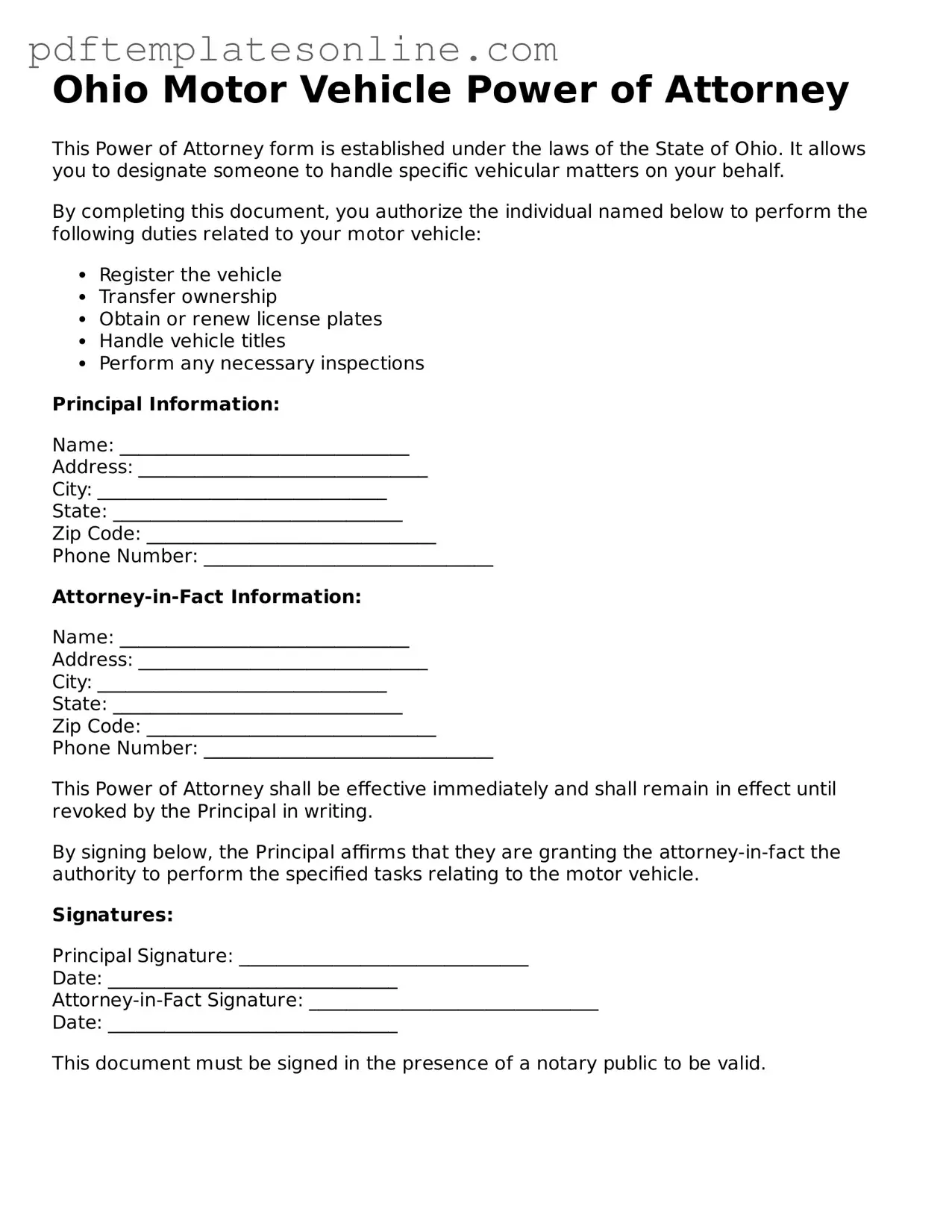Filling out the Ohio Motor Vehicle Power of Attorney form can be straightforward, but many people make mistakes that can lead to complications. One common error is not providing complete information about the principal. The principal must be clearly identified, including their full name and address. Omitting any of these details can render the document invalid.
Another frequent mistake involves the agent's information. The agent, who will act on behalf of the principal, must also be clearly identified. Failing to include the agent's full name and address can create confusion and may prevent the agent from carrying out their duties effectively.
People often overlook the importance of signing the form properly. The principal must sign the document in the designated area. If the signature is missing or does not match the name printed on the form, the document may be rejected by the relevant authorities.
Additionally, individuals sometimes neglect to date the form. A lack of a date can lead to questions about when the authority was granted. It is crucial to include the date to establish a clear timeline for the power of attorney's validity.
Another mistake is not checking the specific powers granted to the agent. The form allows the principal to specify what actions the agent can take. Failing to clearly outline these powers can lead to misunderstandings and limit the agent's ability to act on behalf of the principal.
People also tend to forget to have the form notarized. In Ohio, notarization is often required for the power of attorney to be recognized. Skipping this step can invalidate the document and prevent it from being used as intended.
Lastly, individuals may not keep a copy of the completed form. It is essential to retain a copy for personal records and to provide a copy to the agent. Without a copy, the agent may face difficulties in proving their authority when dealing with motor vehicle transactions.
